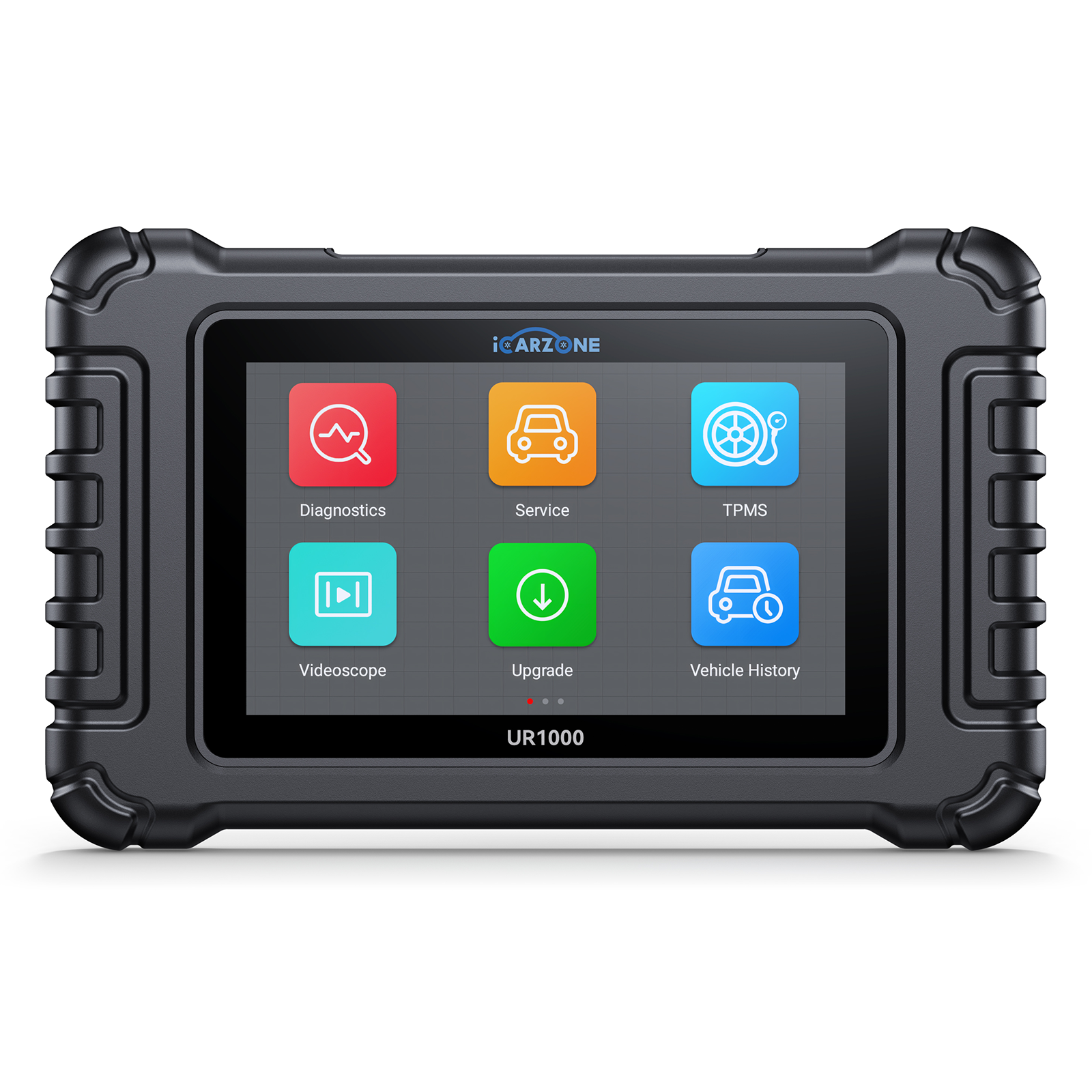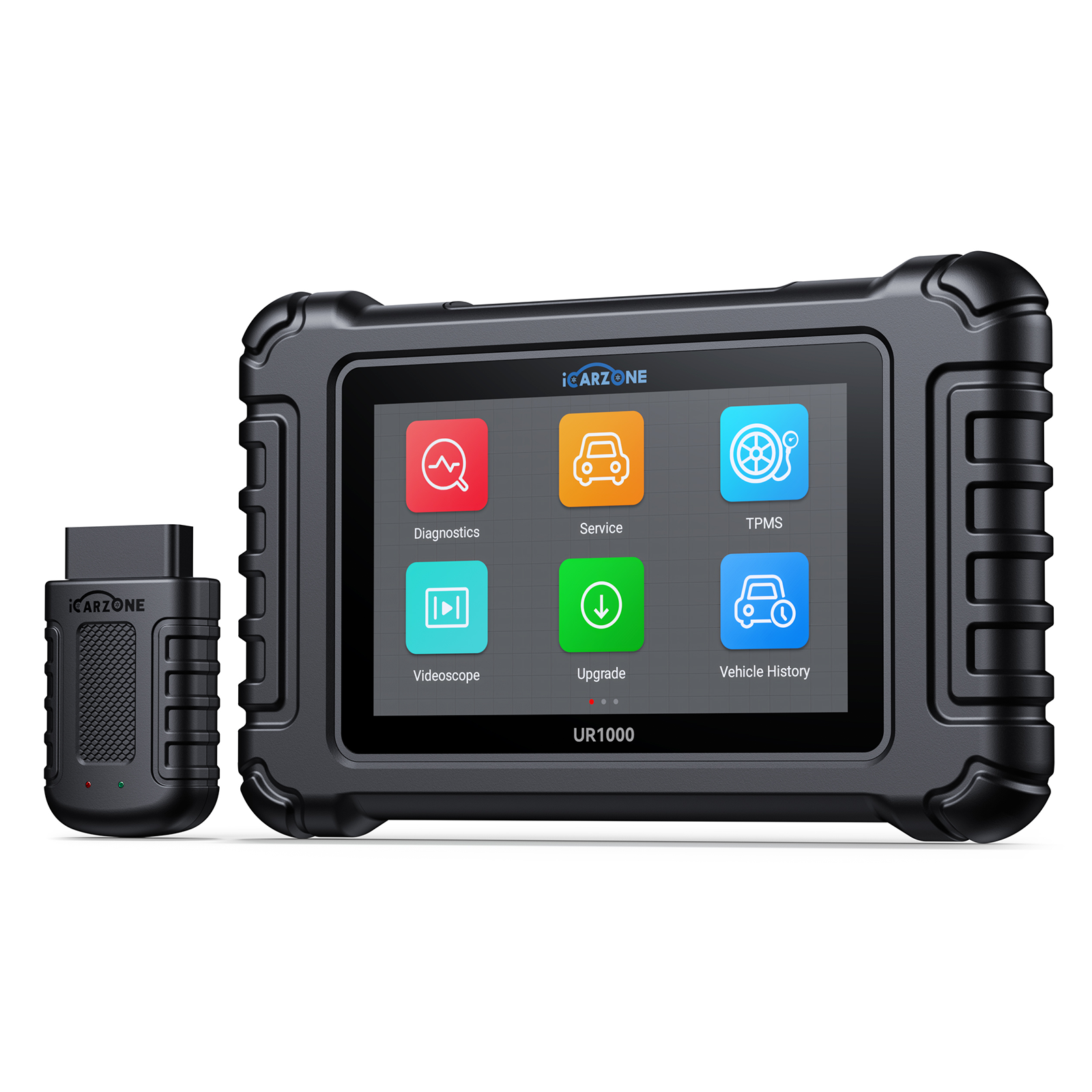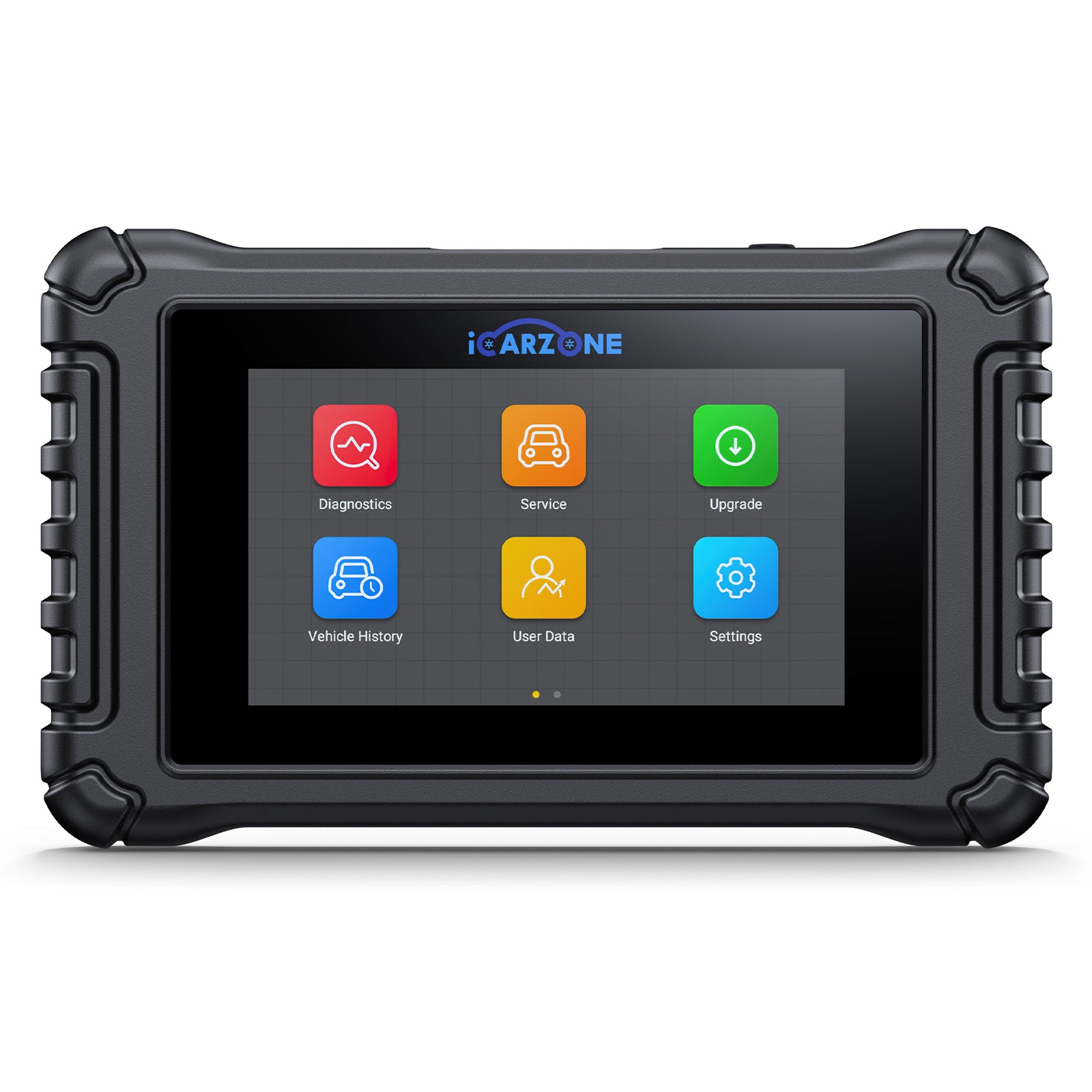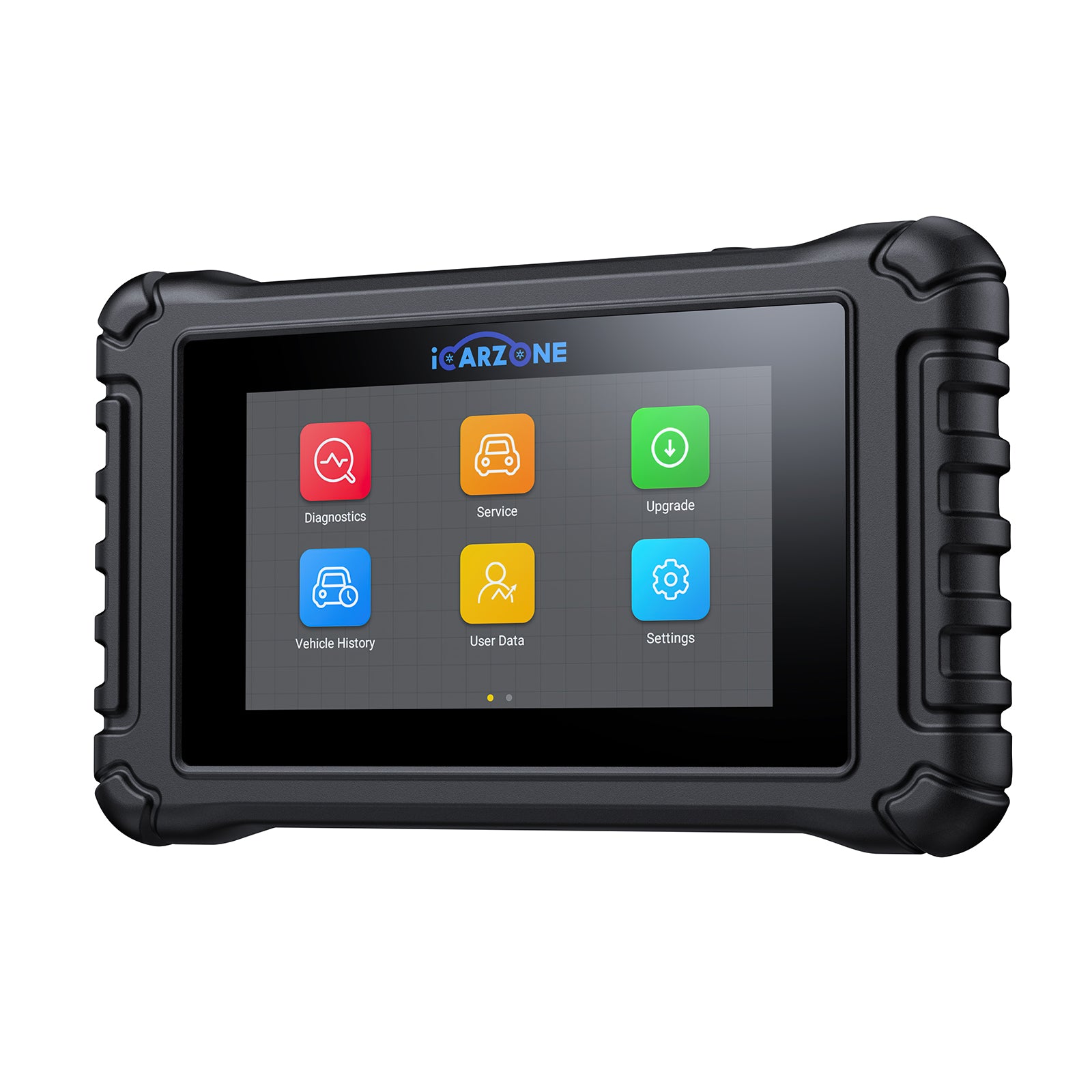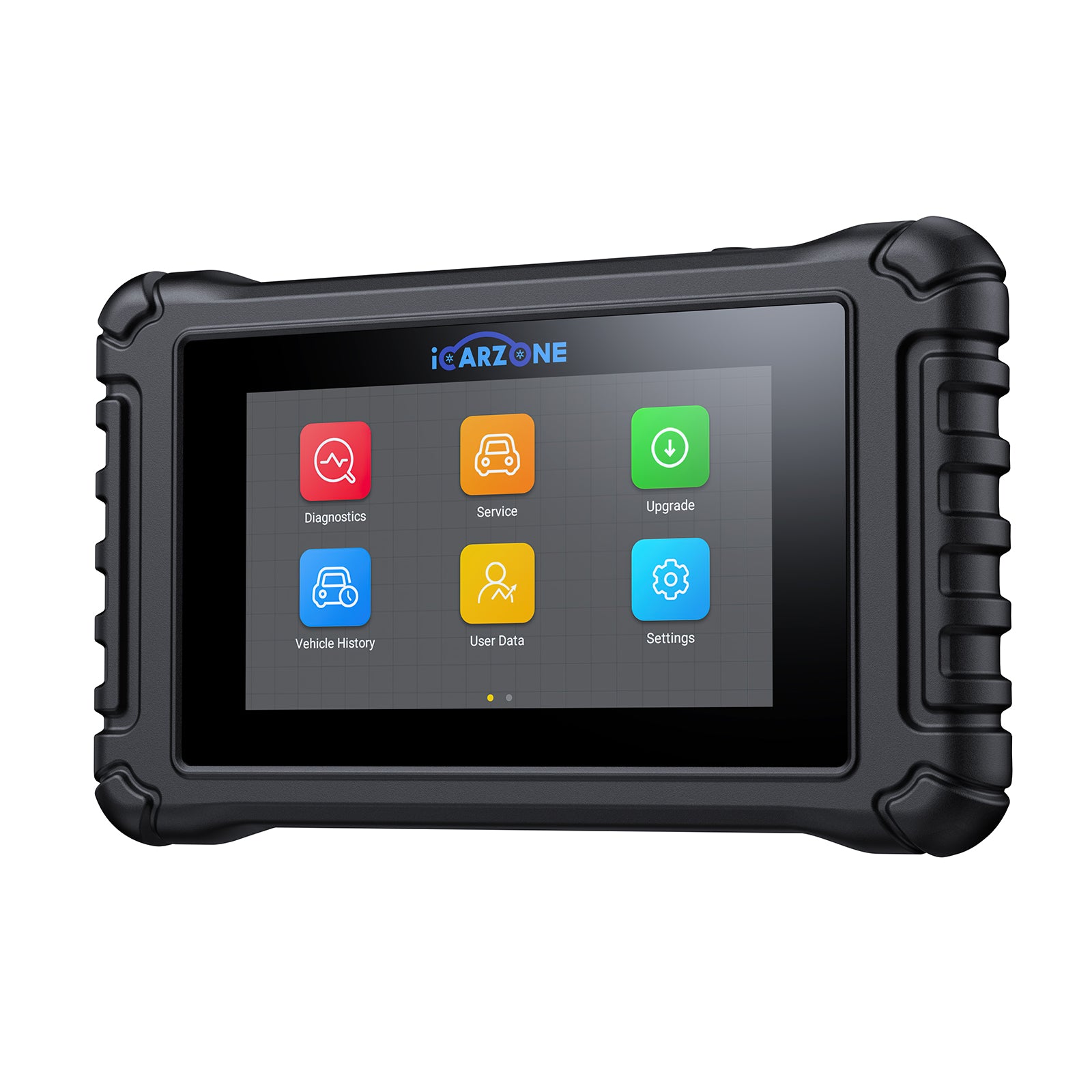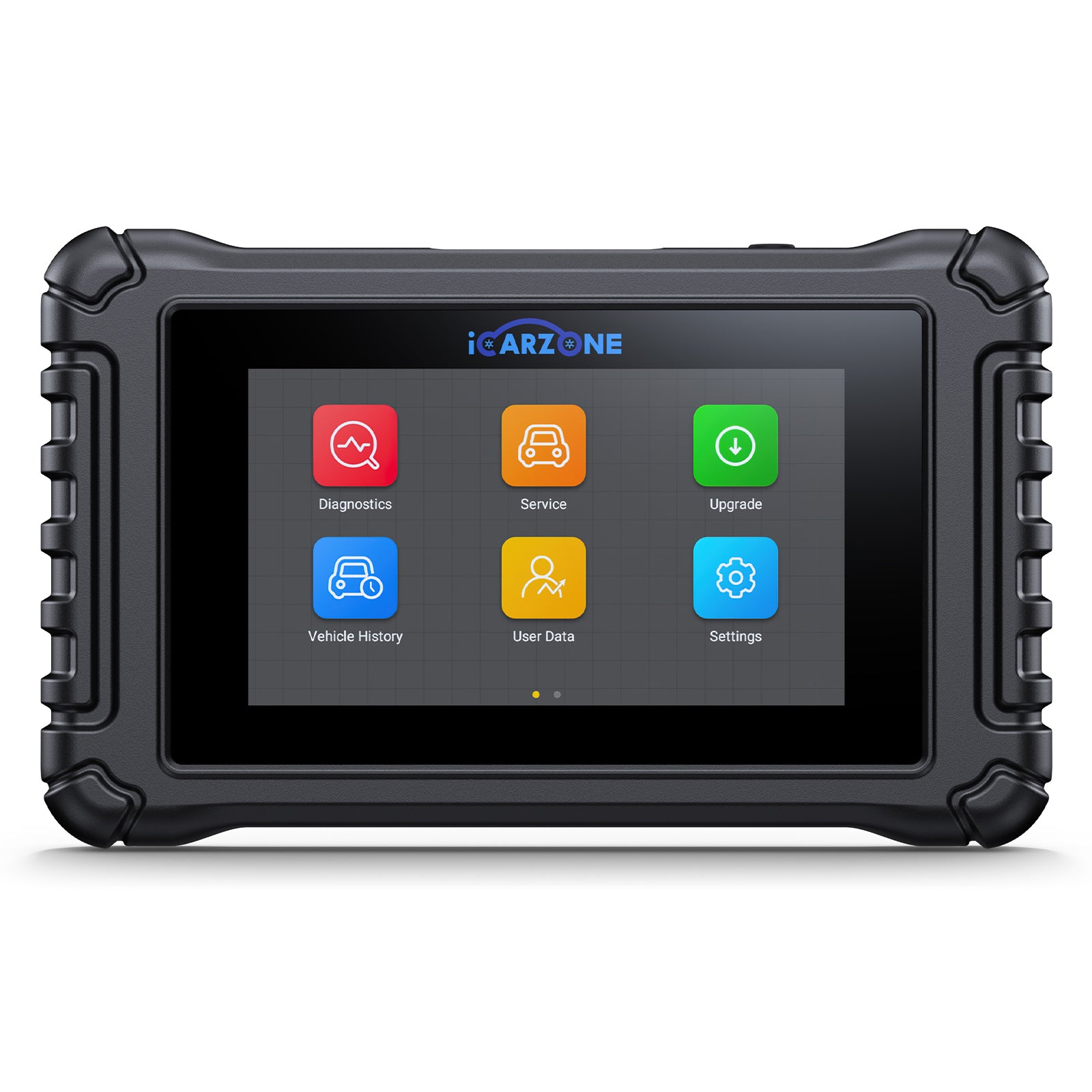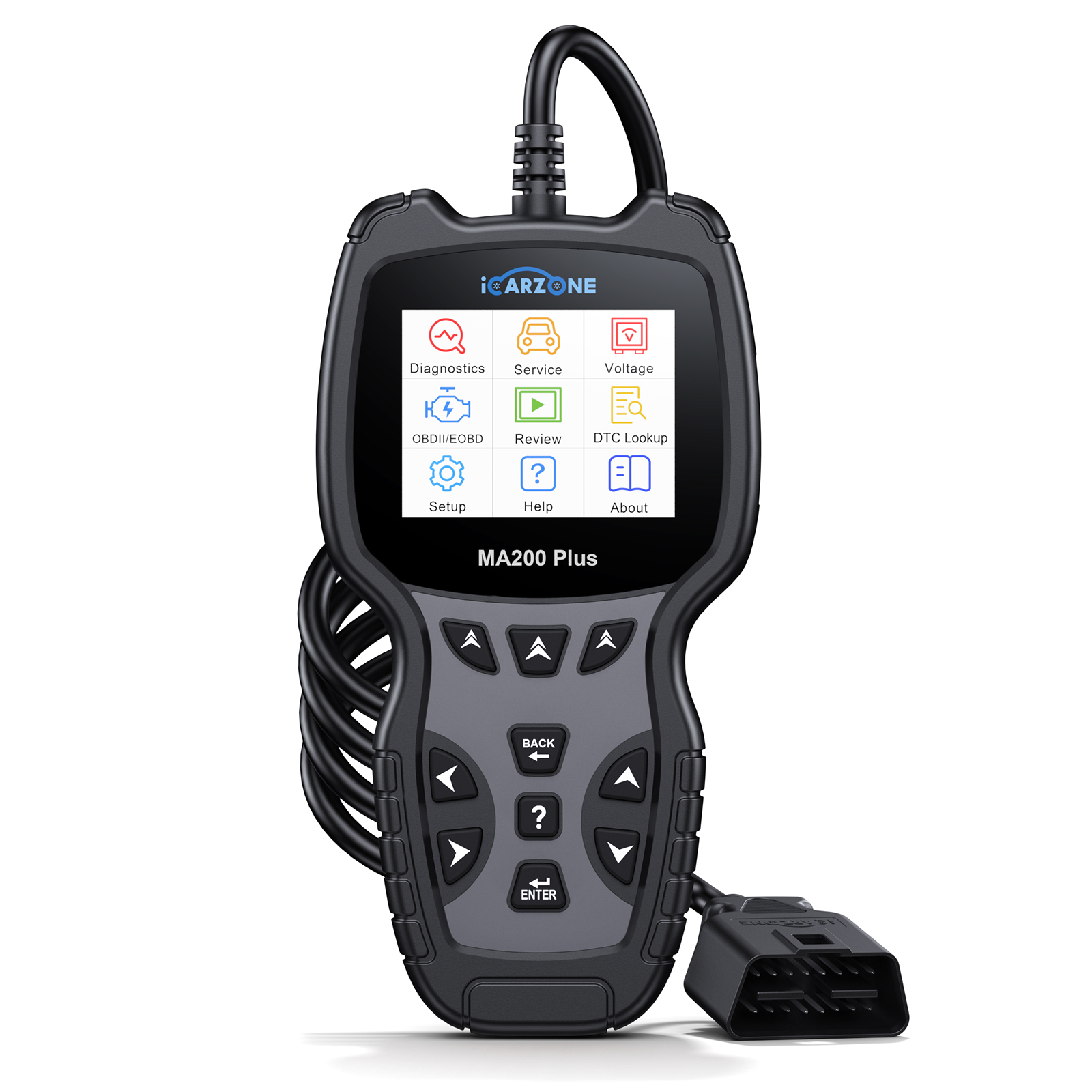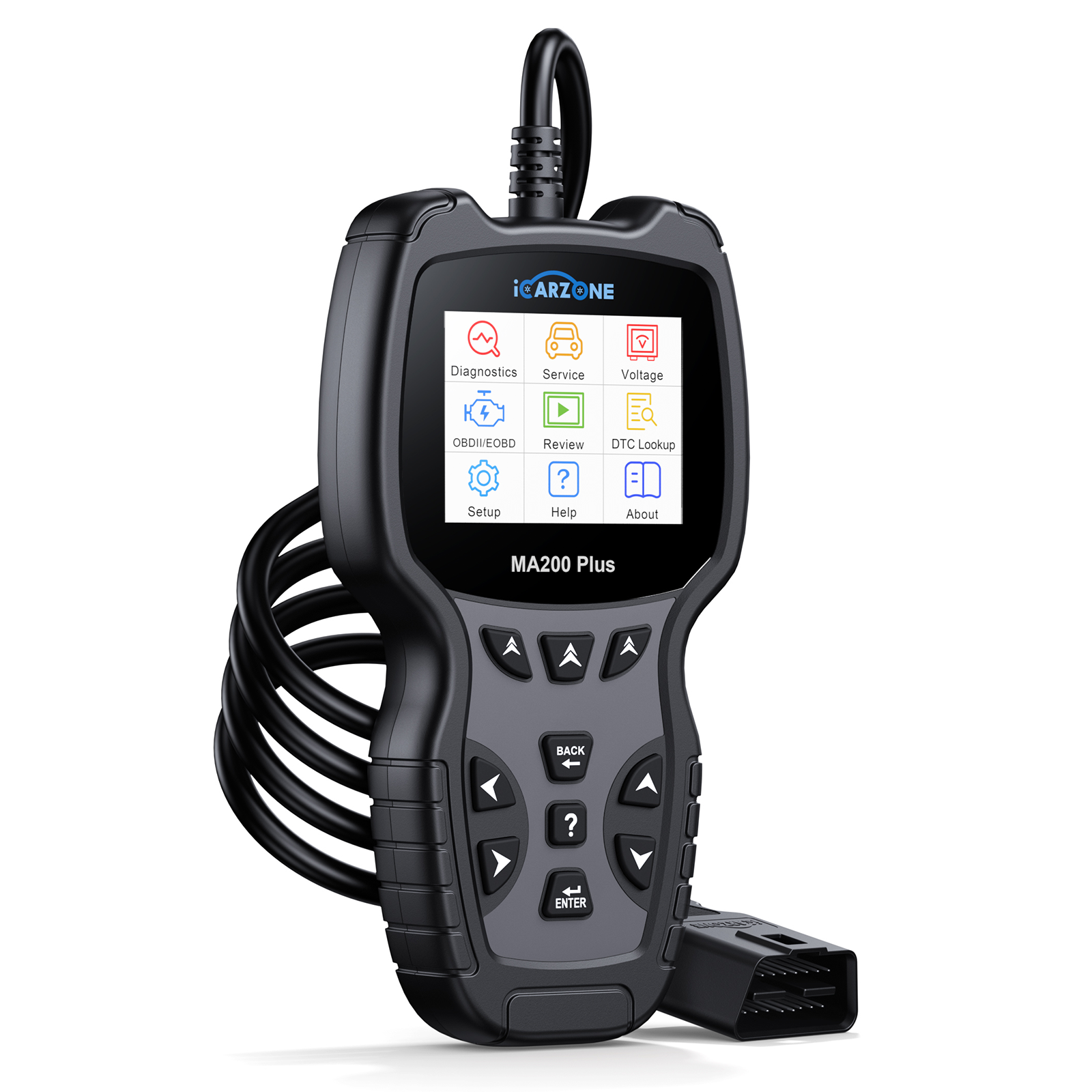P0128 Code in Ford F-150: Fix It Easily with ICARZONE MA100 (No Pro Tools Needed)
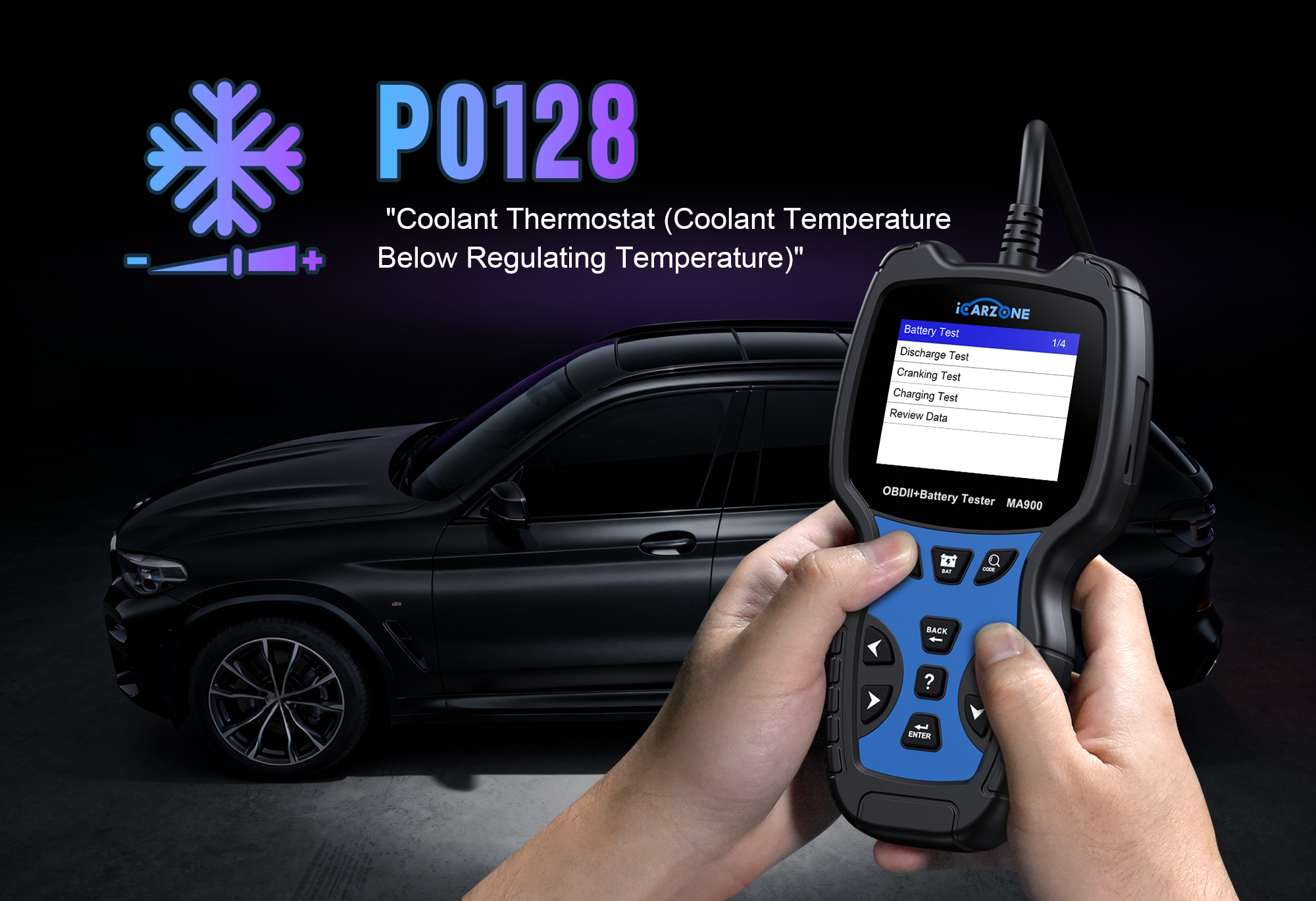
P0128 Code in Ford F-150: Fix It Easily with ICARZONE MA100
Solve P0128 (Coolant Temp Below Thermostat) in 2015-2024 Ford F-150 (3.5L EcoBoost/5.0L). Diagnose & fix with ICARZONE MA100—no pro tools needed.
Fix P0128 with MA100 Now1. What is P0128 in Ford F-150?
P0128 is an OBD-II code meaning Coolant Temperature Below Thermostat Regulating Temperature. For 2015-2024 Ford F-150s—especially those with the 3.5L EcoBoost or 5.0L V8—it signals the engine coolant isn’t reaching the optimal operating temp (195-210°F) fast enough, or stays below it.
The F-150’s Engine Control Module (ECM) monitors coolant temp via the Engine Coolant Temperature (ECT) sensor. It expects the thermostat to open at ~195°F to balance engine performance and efficiency. P0128 triggers when:
- ECT sensor reads below 176°F after 15+ minutes of driving (normal load)
- Thermostat sticks open, letting coolant circulate too early
- ECT sensor malfunctions, sending false low-temp data
- Coolant level is low, disrupting temp regulation (common in F-150s with minor leaks)

Why P0128 Matters for F-150 Owners
The F-150’s 3.5L EcoBoost and 5.0L V8 rely on precise coolant temp for turbo efficiency (EcoBoost) and fuel combustion (5.0L). Ignoring P0128 leads to:
- 2-3 MPG lower fuel economy (EcoBoost models see biggest drops)
- Slower cabin heating in cold weather (F-150’s heater core depends on hot coolant)
- Increased engine wear (cold oil doesn’t lubricate as well)
- Turbo lag in 3.5L EcoBoost (coolant heats turbo components for optimal response)
- Failed emissions tests (unheated catalysts don’t reduce pollutants effectively)
2. Common Causes in 2015-2024 Ford F-150
Stuck-Open Thermostat (2020 F-150 XLT 3.5L EcoBoost) — A 2020 XLT owner with 65,000 miles had P0128 and poor MPG. MA100’s Live Coolant Temp showed coolant never exceeded 170°F. Replacing the OEM thermostat (Ford #HC3Z-8575-A) fixed the issue—common in EcoBoosts due to high coolant flow.Cracked Thermostat Housing (2019 F-150 Lariat 5.0L) — A 2019 Lariat owner noticed P0128 after winter. MA100’s Temp Trend Analysis revealed erratic temp spikes. Inspection found a cracked plastic housing (Ford #BL3Z-8592-A) leaking coolant. Replacing the housing and topping off coolant cleared the code.Faulty ECT Sensor (2017 F-150 Raptor 3.5L) — A Raptor owner had intermittent P0128. MA100’s Sensor Test showed the ECT sensor reading 20°F lower than actual. Swapping the sensor (Ford #DG9Z-12A648-A) resolved the false code—Raptors’ off-road use can damage sensor wiring.Low Coolant (2021 F-150 King Ranch 3.5L) — A King Ranch owner’s P0128 was traced to a slow leak from the radiator hose. MA100’s Coolant Level Alert (via temp patterns) flagged the issue. Refilling with Ford-approved coolant (Motorcraft Orange) and fixing the hose leak cleared P0128.
3. Key Symptoms in Ford F-150 Models
P0128 symptoms in F-150s are most noticeable in daily driving and cold weather—here’s what to watch for:
Performance & Efficiency Symptoms
- Illuminated Check Engine Light (CEL) with P0128 stored
- Reduced fuel economy (2-3 MPG drop in 3.5L EcoBoost)
- Turbo lag (EcoBoost models) — slower acceleration
- Harder cold starts (engine struggles to warm up)
- Transmission shifting delays (ECT sensor data affects shift points)
Comfort & Visual Symptoms
- Weak cabin heat (even with heater on high)
- Coolant temp gauge stays below the “normal” mark (left of center)
- Visible coolant leaks (under front of engine—thermostat housing area)
- Engine runs louder than usual (cold engine has looser tolerances)
- Foggy windows that won’t clear (weak heater can’t defog effectively)
4. F-150 Engines/Trims Prone to P0128
Ford service data and F-150 forums highlight these configurations with the highest P0128 rates, due to engine design and component materials:
| Engine | Model Years | F-150 Trims | % of P0128 Cases | Primary Risk Factor |
|---|---|---|---|---|
| 3.5L EcoBoost V6 | 2018–2024 | XLT, Lariat, Raptor | 52% | Plastic thermostat housing prone to cracking |
| 5.0L Coyote V8 | 2015–2020 | XL, XLT, King Ranch | 28% | Thermostat sticking open (high coolant flow design) |
| 3.5L EcoBoost High-Output | 2021–2024 | Raptor, Tremor | 12% | High temps stress ECT sensor wiring |
| 2.7L EcoBoost V6 | 2018–2024 | XL, XLT | 6% | Small coolant system vulnerable to low levels |
| 3.3L Ti-VCT V6 | 2015–2024 | XL, XLT | 2% | Rare—mostly due to aftermarket thermostat issues |
Critical TSBs for F-150 P0128:
- Ford TSB 21-2258 (2018–2020 3.5L EcoBoost): Replaces plastic thermostat housing with updated metal version (#HC3Z-8592-B).
- Ford TSB 19-2434 (2015–2019 5.0L): Thermostat replacement guide to fix P0128 and low-heat issues.
5. Diagnostic Steps for F-150 with ICARZONE MA100
ICARZONE MA100 is F-150-optimized—here’s how to diagnose P0128 accurately, no dealer visit needed:
| Step | Action with MA100 | F-150-Specific Goal | Pass/Fail Criteria |
|---|---|---|---|
| 1 | Full Scan > Select "Ford" > "F-150" > "Engine" | Confirm P0128 and check for related codes (P0117, P0118: ECT sensor issues) | Pass: Isolated P0128 | Fail: Multiple coolant/temp codes (system issue) |
| 2 | Live Data > "Coolant System" > "ECT Sensor Temp" | Monitor temp for 15 minutes of driving (normal load, 50+ mph) | Pass: Reaches 195-210°F | Fail: Stays below 176°F (thermostat issue) |
| 3 | Advanced Diagnostics > "Sensor Test" > "ECT Sensor" | Compare ECT reading to actual coolant temp (use infrared thermometer on radiator) | Pass: Within 5°F | Fail: 10°F+ discrepancy (faulty sensor) |
| 4 | Component Test > "Thermostat Check" | Analyze temp rise rate (should increase 10°F every 2 minutes after start) | Pass: Steady rise | Fail: Slow/erratic rise (stuck-open thermostat) |
| 5 | Service Functions > "TSB Lookup" > Enter F-150 VIN | Check for applicable TSBs (21-2258 for 3.5L EcoBoost housing recall) | Pass: No TSB match | Fail: TSB applies (follow Ford’s fix) |
Case Example: A 2020 F-150 3.5L EcoBoost failed Step 2 (max temp 168°F) and Step 4 (slow temp rise). MA100’s TSB Lookup flagged TSB 21-2258—replacing the plastic housing with the metal upgrade (#HC3Z-8592-B) fixed P0128. A 50-mile test drive confirmed temp stayed at 205°F.
Diagnose P0128 in F-150 with MA100
6. Fixes for F-150's P0128
Resolve P0128 in your F-150 with these MA100-verified steps—tailored to 3.5L EcoBoost and 5.0L models:
1. Replace Thermostat (Most Common Fix)
- Let engine cool completely (2+ hours) to avoid burns.
- Disconnect negative battery terminal (F-150’s battery is under the hood, driver’s side).
- Drain 2-3 quarts of coolant from radiator drain plug (passenger side bottom) to avoid spills.
- Locate thermostat housing:
- 3.5L EcoBoost: Front of engine, near turbo inlet (plastic housing with 3 bolts).
- 5.0L V8: Top of engine, connected to upper radiator hose (metal housing with 2 bolts).
- Remove housing bolts (10mm socket) and pull housing off—note old thermostat orientation.
- Replace with OEM thermostat:
- 3.5L EcoBoost: Ford #HC3Z-8575-A (use with metal housing #HC3Z-8592-B for 2018+).
- 5.0L V8: Ford #BL3Z-8575-A.
- Install new gasket (included with thermostat) and torque bolts to 8-10 ft-lbs.
- Refill with Motorcraft Orange Coolant (Ford’s recommended type) and bleed air from the system.
- Use MA100’s Coolant Temp Validation to confirm temp reaches 195°F after test drive.
2. Fix Cracked Thermostat Housing (3.5L EcoBoost 2018+)
- Follow Steps 1-3 from above (cool engine, disconnect battery, drain coolant).
- Remove the 3 bolts (10mm) holding the plastic housing to the engine block.
- Clean mating surface with a plastic scraper (avoid scratching aluminum block).
- Install Ford’s updated metal housing: #HC3Z-8592-B (includes new gasket).
- Torque bolts to 9 ft-lbs (sequential order: top, bottom, middle).
- Refill coolant and use MA100’s Leak Detection (via temp stability) to confirm no leaks.
3. Replace Faulty ECT Sensor
- Disconnect battery negative terminal.
- Locate ECT sensor:
- 3.5L EcoBoost: Near thermostat housing (single wire connector).
- 5.0L V8: Passenger side of cylinder head (two-wire connector).
- Disconnect sensor connector and unscrew sensor (19mm socket or wrench).
- Apply thread sealant to new sensor (Ford #DG9Z-12A648-A) and install by hand.
- Torque to 15 ft-lbs (don’t over-tighten—aluminum threads strip easily).
- Reconnect battery and use MA100’s Sensor Calibration to sync new ECT with ECM.
7. Repair Costs & Maintenance Tips
- DIY Diagnosis with MA100: $0 (avoids $120–$180 dealer diagnostic fee)
- OEM Thermostat (F-150): $35–$65 (3.5L EcoBoost #HC3Z-8575-A; 5.0L #BL3Z-8575-A)
- Metal Thermostat Housing (2018+ 3.5L): $80–$120 (Ford #HC3Z-8592-B)
- ECT Sensor (OEM): $25–$45 (Ford #DG9Z-12A648-A)
- Coolant (Motorcraft Orange): $15–$25 per gallon (needs 2–3 gallons for full change)
- Professional Thermostat Replacement: $250–$350 (parts + 1.5 hours labor)
- Dealer Housing Replacement (3.5L): $400–$550 (includes coolant flush)
F-150 Maintenance Tips to Avoid P0128
- Use only Motorcraft Orange Coolant—other types cause thermostat sticking and sensor corrosion.
- Check coolant level monthly (F-150’s reservoir is on the passenger side—markings for “MIN/MAX”).
- Replace thermostat every 100,000 miles (preventive—3.5L EcoBoost thermostats wear faster).
- Inspect 2018+ 3.5L EcoBoost housing annually for cracks (look for green/orange leaks).
- Flush coolant every 150,000 miles (F-150’s coolant degrades over time, losing heat-transfer ability).
- Use MA100’s Monthly Coolant Check to monitor temp trends—catch P0128 early.
8. Preventive Maintenance for F-150
Keep P0128 away from your F-150 with these Ford-recommended and MA100-supported steps:
-
Coolant System Maintenance:
- Normal use: Coolant flush every 150,000 miles or 10 years.
- Towing/off-roading: Flush every 100,000 miles (heavy use degrades coolant faster).
- Top off with Motorcraft Orange Coolant—never mix coolant types.
-
Thermostat & Housing Care:
- 2018+ 3.5L EcoBoost: Replace plastic housing with metal #HC3Z-8592-B at 80,000 miles (preventive).
- All models: Inspect thermostat during oil changes—look for leaks around housing.
- Use MA100’s Thermostat Health Check every 30,000 miles to test opening/closing.
-
ECT Sensor Maintenance:
- Clean sensor connector annually (use electrical contact cleaner) to prevent corrosion.
- Replace sensor every 120,000 miles (preventive—old sensors send false temp data).
- Check wiring for damage (especially in Raptors/Tremors used off-road).
-
Driving Habits:
- Let engine warm up 2-3 minutes in cold weather (avoids shocking thermostat with cold coolant).
- Avoid short trips (under 10 minutes) — engine never reaches operating temp, stressing components.
- Use block heater in sub-20°F weather (protects thermostat and improves cold starts).
9. F-150-Specific FAQs
Yes, but short-term only. P0128 doesn’t cause immediate damage, but prolonged driving hurts MPG and wears the engine. Fix it within 1-2 weeks—especially in winter.
Not recommended. Aftermarket thermostats often don’t match F-150’s precise temp specs (195°F opening). Use OEM Ford thermostats to avoid repeat P0128.
Yes—MA100 is fully compatible with 2000-2024 F-150s, including the 2024 3.5L EcoBoost. It includes the latest TSB data for housing upgrades.
Commonly due to air in the coolant system (bleed it properly) or a cracked housing (3.5L EcoBoost). Use MA100’s temp trend tool to check for leaks.
Yes—towing increases engine heat, but a faulty thermostat can’t regulate temp, leading to overheating risks. Fix P0128 before towing heavy loads.
No, but low oil and P0128 often coexist. Low oil doesn’t affect coolant temp, but both are signs of poor maintenance—use MA100 to check both systems.
10. Summary
P0128 (Coolant Temp Below Thermostat) is a common, fixable issue in 2015-2024 Ford F-150s—especially 3.5L EcoBoost models with plastic thermostat housings. Caused by stuck thermostats, cracked housings, or faulty ECT sensors, P0128 hurts fuel economy and cabin comfort if ignored.
ICARZONE MA100 simplifies F-150 P0128 diagnosis with F-150-specific tools: live coolant temp monitoring, TSB lookup, and sensor testing. Most cases are resolved with a $35-$120 OEM part (thermostat/housing) and 1-2 hours of DIY work—saving $250+ on dealer repairs. By following preventive steps (coolant flushes, housing upgrades), F-150 owners can avoid P0128 entirely.
Fix P0128 in Your Ford F-150 with ICARZONE MA100
MA100 works with all 2000-2024 F-150s—3.5L EcoBoost, 5.0L, and more. Diagnose, fix, and prevent P0128 with pro-grade tools, no experience needed.

© 2025 iCarzone. All rights reserved.


